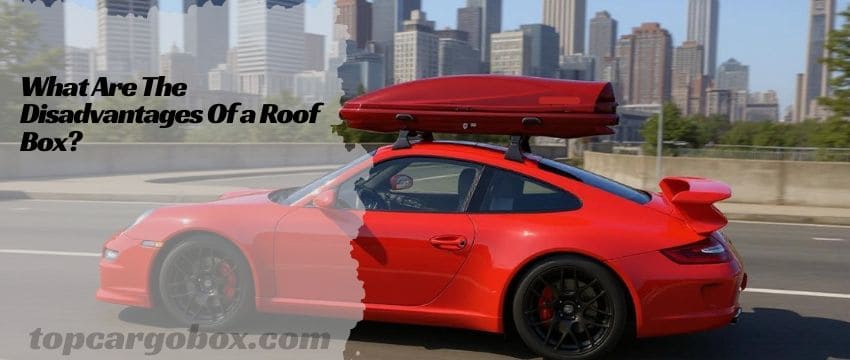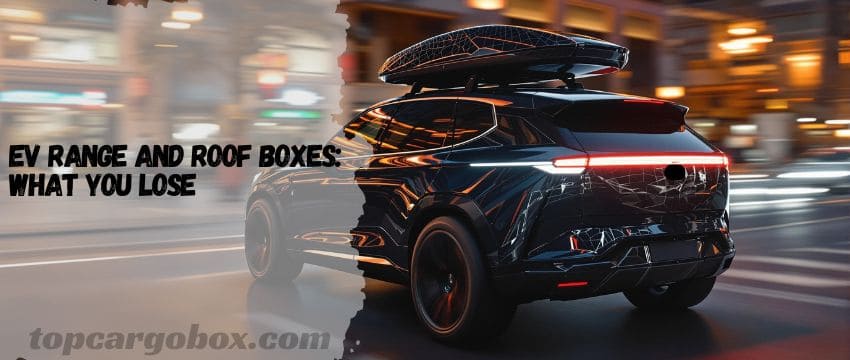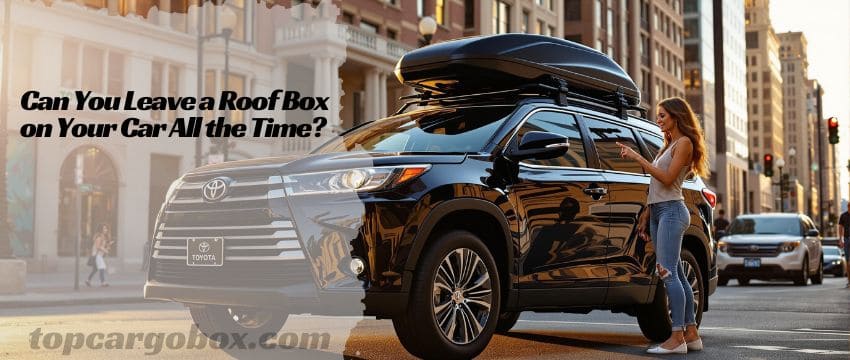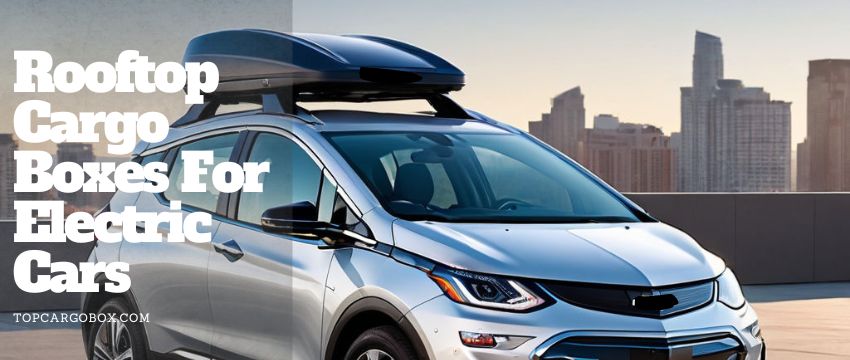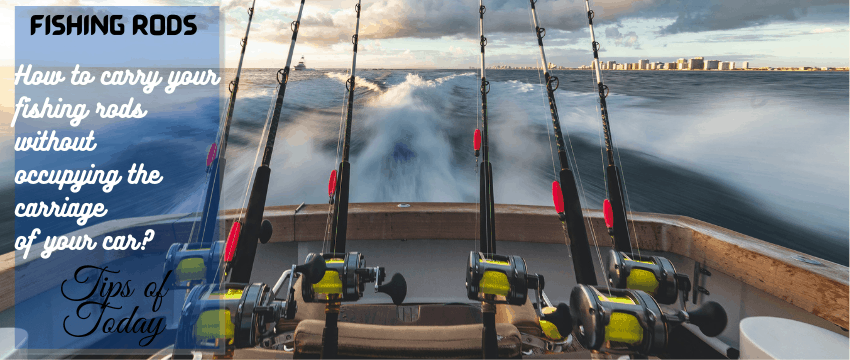Hey there! So you’re thinking about strapping one of those slick roof boxes to your car? Awesome! They totally look cool and promise tons of extra space for your next big adventure, road trip, or just hauling stuff that won’t fit inside. Honestly, they are super useful in many situations. But hold up a sec before you swipe that credit card. Just like anything, roof cargo boxes come with their own set of headaches and disadvantages that nobody really talks about until you’re stuck dealing with them. It’s not all sunshine and extra luggage space. Before you commit, let’s dive deep into the real, sometimes frustrating, downsides of owning and using a roof box. Trust me, knowing these upfront can save you a ton of hassle, unexpected costs, and maybe even a few choice words yelled at your car later. Let’s get real about what that extra storage really costs beyond just dollars.
The Wallet Wince: Costs That Sneak Up on You
Okay, let’s talk cash first because, for real?, this is often the initial shocker. That shiny box you see online or in the store? Yeah, that price tag is just the beginning. Buying the box itself can feel like a punch to the gut. While you can find cheaper options starting around $300, decent quality, aerodynamic boxes that won’t rattle apart or leak like a sieve often start closer to $600-$800. And if you want top-tier, super sleek, super durable models? You could easily be looking at $1,200 or way more. Ouch, right? But wait, there’s more!
What about the roof rack?
Here’s the kicker: the roof box doesn’t magically stick to your bare roof! You absolutely need a roof rack system – crossbars specifically designed for your car. If your car didn’t come with factory rails or crossbars, you’re looking at buying the whole shebang: towers, feet, and crossbars. Even if you have factory side rails, you might still need specific crossbars. This setup alone can easily add another $200 to $600+ to your total cost. Suddenly that “affordable” box isn’t feeling so affordable anymore. Totally sneaky!
Installation and Accessories: The Nickel and Diming
Feeling handy? Maybe you can install the rack and box yourself. But it’s not always a breeze, especially the first time. If you’re not down for the struggle, professional installation at an auto shop is another $50-$150 you might shell out. Then there are the little things: a sturdy lock to deter thieves ($20-$50), maybe a protective mat for your car’s roof if the feet might scratch ($30-$50), and don’t forget that aerodynamic drag is gonna cost you at the pump (more on that disaster later!). It all adds up fast. You might start wondering if renting a trailer for that one big trip a year is actually cheaper. Legit thought.

Long-Term Value vs. Hassle
Sure, you own it forever (or until it breaks or you sell the car). But consider how often you’ll really use it. Is it worth sinking potentially $1,000+ upfront plus ongoing fuel penalties for something that might sit in your garage 90% of the time? For some folks who travel constantly with a full house, absolutely! But for the occasional user? Meh, maybe not. That cash could go towards awesome experiences at your destination instead of just getting your stuff there. Think about it.
Kiss Good Gas Mileage Goodbye (Seriously!)
Alright, let’s talk about the absolute biggest daily bummer: fuel economy. Or rather, the lack of it. Sticking a big, bulky box on your roof? It’s basically like strapping a giant parachute to your car that fights against the wind the whole time you’re driving. This creates massive drag, and your engine has to work way harder – burning way more fuel – just to push through it. We’re not talking about losing just one or two miles per gallon here. Oh no.
How bad is it really?
Get this: Studies and countless real-world user reports consistently show that adding a loaded roof box can slash your highway fuel efficiency by a whopping 15% to 30% or even more. Imagine getting 25 MPG normally. With a box up top, you could easily drop down to 19 MPG or less on the open road. That’s brutal! On a 500-mile road trip, that difference could mean needing 5+ extra gallons of gas. At today’s prices? That’s $20+ vanishing into thin air, just for that one trip! And that’s with the box loaded. Driving with an empty roof box? Believe it or not, it’s often worse for fuel economy because the empty space creates even more turbulent drag! Yeah, it sucks. Check out why driving empty can be extra costly for the science behind that head-scratcher.
Speed Makes it WAY Worse
Here’s the real kicker: The faster you drive, the exponentially worse the fuel drain gets. That aerodynamic drag increases with the square of your speed. So going 70 MPH creates way more drag (and burns way more gas) than cruising at 55 MPH. That family road trip where you’re trying to make time on the interstate? It’s costing you a small fortune in extra fuel stops. You’ll be waving goodbye to dollar bills flying off your roof every time you hit the accelerator. Feeling the pain yet?
The Long-Term Fuel Bill
It’s not just about one trip. If you leave the box on your car for weeks or months “just in case,” you’re literally burning money every single day during your normal commute. Even a 10% drop in fuel economy adds up shockingly fast over months of driving. That sleek storage solution starts looking like a very expensive, gas-guzzling accessory you can’t afford to use. Totally a buzzkill for your budget and the planet. Maybe carpooling starts looking better?
Whoa, Nelly! Handling Gets Weird (And Loud!)
Buckle up, because sticking a giant wind sail on your roof fundamentally changes how your car drives. It’s not just about gas; it’s about control and comfort. Ever driven a tall van or truck and felt it get pushed around by wind? That’s your new reality, amplified.
Wind Noise: Say What?!
First up, the noise. Oh my gosh, the noise! Even the most “aerodynamic” roof boxes create significant wind roar and whistling, especially at highway speeds. That peaceful cabin vibe? Gone. Replaced by a constant, often deafening, whooshing or whistling sound that makes conversation difficult and cranks up the volume on your music or podcast. You’ll find yourself yelling “WHAT?!” at your passengers more than you’d like. Long drives become genuinely fatiguing because of the constant auditory assault. It’s like having a jet engine strapped to your roof, minus the cool thrust. Dude, it gets old fast.
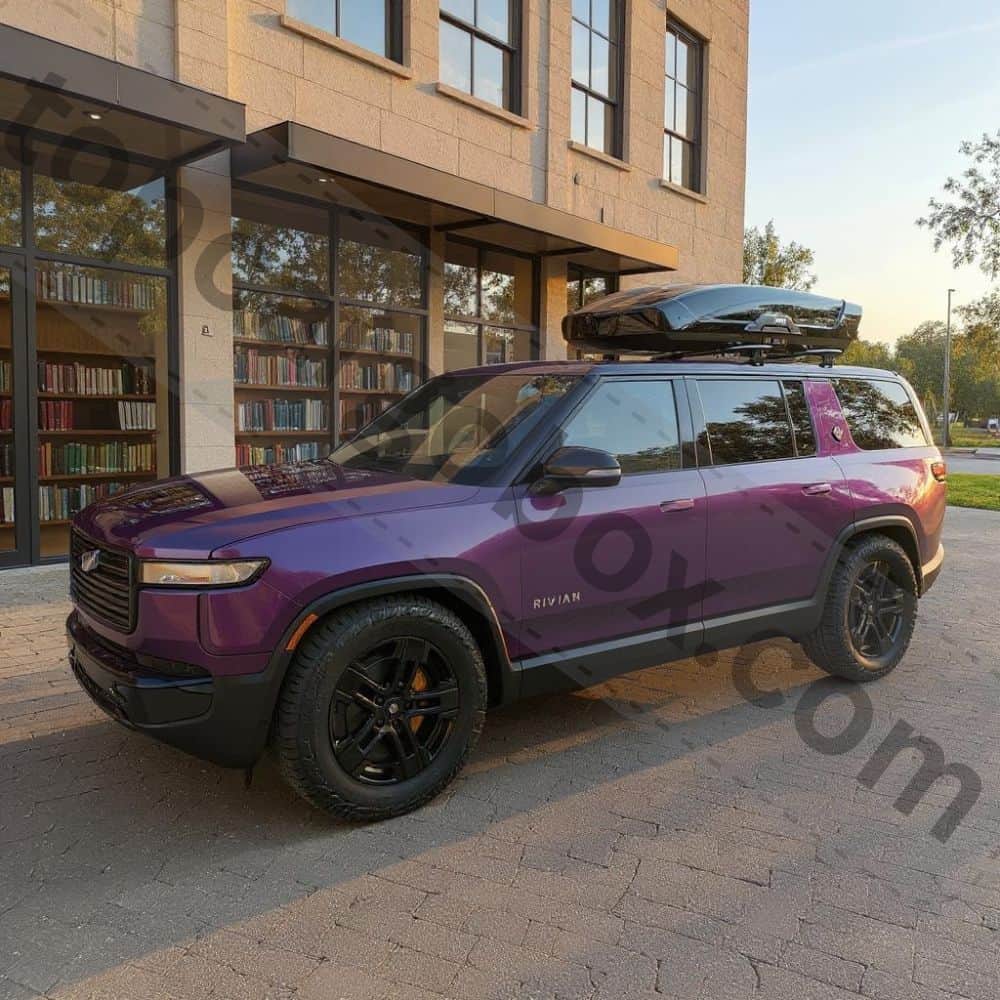
Buffeting and Sway: White Knuckle Driving
Then there’s the handling. That big box catches crosswinds like nobody’s business. Driving over a bridge on a windy day? Get ready for some serious buffeting – you’ll feel the car get pushed sideways unexpectedly. Passing (or being passed by) large trucks or semis creates turbulent air that can really jolt your car, making the steering wheel tug in your hands. It requires constant attention and correction, which is mentally draining on long journeys. You feel less connected to the road and more like you’re wrestling a bulky beast. It definitely takes the “chill” out of driving. Plus, the extra weight up high raises your car’s center of gravity. While a box itself isn’t super heavy (often 40-70 lbs empty), adding 100+ lbs of gear up there makes your car feel more top-heavy, especially in corners or during sudden maneuvers. It can increase body roll and just makes the whole vehicle feel less planted and secure. Not awesome when you need to swerve.
Speed Limitations: Slow Down, Speedy!
Because of these handling quirks and the increased stress on the rack system, manufacturers always specify lower maximum speed limits when using a roof box – often around 75-80 MPH, sometimes less. Trying to push past this isn’t just risky for your control; it puts enormous strain on the mounts and increases the chance of failure. So forget about setting cruise control at 85; you’ll need to embrace the slower lane. That road trip just got longer and more stressful. How’s that for a trade-off? For more on safe driving practices, see our guide on driving with a roof cargo box.
The Installation and Removal Hassle (It’s a Grunt!)
Let’s be brutally honest: Putting a roof box on your car and taking it off again is rarely a quick, effortless, five-minute job. It’s often a physical chore that can test your patience, especially if you’re not particularly tall or if weather conditions are less than ideal.
Heavy Lifting and Awkward Angles
Even empty, most roof boxes are bulky, awkward, and surprisingly heavy. We’re talking 40 to 80 pounds or more of rigid plastic or fiberglass that you have to lift above your head and maneuver onto the crossbars without scratching your precious car paint. It requires strength, balance, and coordination. Trying to line up the mounting clamps precisely while holding all that weight aloft? Yeah, it’s a workout. If you’re shorter, you might absolutely need a step stool, adding another thing to juggle. And forget about doing it gracefully in a tight parking garage with low clearance – been there, scratched that. Ugh.
The Mounting Maze
Then comes securing it. Different boxes have different mounting systems – clamps, levers, bolts, twist knobs. Some are relatively intuitive; others feel like solving a puzzle designed by someone who hates you. Getting it perfectly centered and ensuring all clamps are securely locked down tight enough (but not too tight to damage the bars) takes time and double-checking. It’s not something you want to rush, because a loose box is a dangerous projectile. You’ll likely be crawling around on the roof, stretching, and grunting more than you expected. Come on, really? All this before you even start packing!
Storage Headaches: Where Does This Monster Live?
Okay, you survived the install. Trip’s over. Now you have to reverse the whole sweaty process. But where do you put this giant plastic shell when it’s not on your car? Roof boxes are huge! Unless you have a massive garage with high ceilings and ample wall space or a dedicated storage area, finding a spot is a real challenge. Basement? Only if you have walk-out access and wide stairs. Garage rafters? Maybe, but hoisting 60+ pounds overhead is risky. Leaving it outside? Sun and weather will degrade it faster, and it’s an eyesore (and theft risk). That “convenient” extra storage often becomes a very inconvenient storage problem itself for 11 months of the year. Forget it being a simple solution.
Parking Panic and Height Headaches
Remember when parking was relatively straightforward? Yeah, those days are over once you mount a roof box. Suddenly, the world feels smaller and more dangerous for your car and your wallet.
Low Clearance Nightmares
Drive-thrus? Forget about grabbing a quick coffee or burger on the road. Most drive-thru clearance heights are designed for standard vehicles, not cars with an extra 18-24 inches strapped to the roof. You’ll be nervously eyeing those height bars, sweating bullets, and inevitably having to park and walk in. Parking garages? Total Russian roulette. Even garages marked with seemingly generous clearances can have low pipes, ductwork, or sudden dips that your box might crunch into with a sickening sound. That $1,000 box? Now it’s got a giant crack. That $50,000 SUV? Roof damage. Total bummer, and potentially a huge financial hit. You’ll start avoiding entire sections of cities or meticulously researching parking options online before you go anywhere. Talk about cramping your style.
The Parallel Parking Fiasco
Think parallel parking is tricky normally? Try it with your visibility partially blocked upwards and the constant fear that your box is sticking out way further than your bumpers. You can’t easily see where the box ends relative to the curb or the car behind you. Maneuvering into a tight spot becomes a stressful, multi-point ordeal involving lots of guesswork, getting out to check, and probably annoying other drivers waiting behind you. Forget squeezing into that perfect spot downtown; you’ll likely be circling blocks looking for an easier, more open space, wasting time and gas. How’s that for convenience?
Garage Guessing Games
Even getting into your own garage becomes an adventure. Did you remember to account for the box height? Is that bike hanging from the ceiling suddenly a hazard? That automatic garage door opener might clear the car roof, but will it clear the box? Many people discover the hard way that their garage door closes onto the box. The result? Damaged box, damaged garage door, or both. You might need to painstakingly measure your garage clearance, measure the car+box height, and maybe even adjust your garage door opener’s travel limits. It’s a whole thing. Suddenly, that extra storage feels like it’s shrinking your usable world. Not cool.
Packing Puzzles and Accessibility Issues
So you’ve managed the install, braved the gas station, and navigated parking. Now it’s time to actually use the thing! Packing a roof box isn’t like tossing bags in the trunk. It’s a strategic operation with its own set of rules and frustrations.
The Weight and Balance Tightrope Walk
You can’t just chuck everything heavy up there. Roof boxes have strict weight limits, usually between 100 and 165 pounds max. Exceeding this isn’t just bad for the box; it’s dangerous for your car’s handling and could overload the roof rack. You absolutely must weigh your gear before loading it. Then comes the puzzle: distributing that weight evenly side-to-side and, crucially, keeping the heaviest items centered and positioned low within the box. Loading it unevenly or putting heavy stuff at the very front or back can seriously mess with your car’s balance, making it pull or handle unpredictably. It requires constant thought and adjustment. Who knew packing could be such a high-stakes game? Our how to pack a roof box guide has essential tips to avoid disaster.
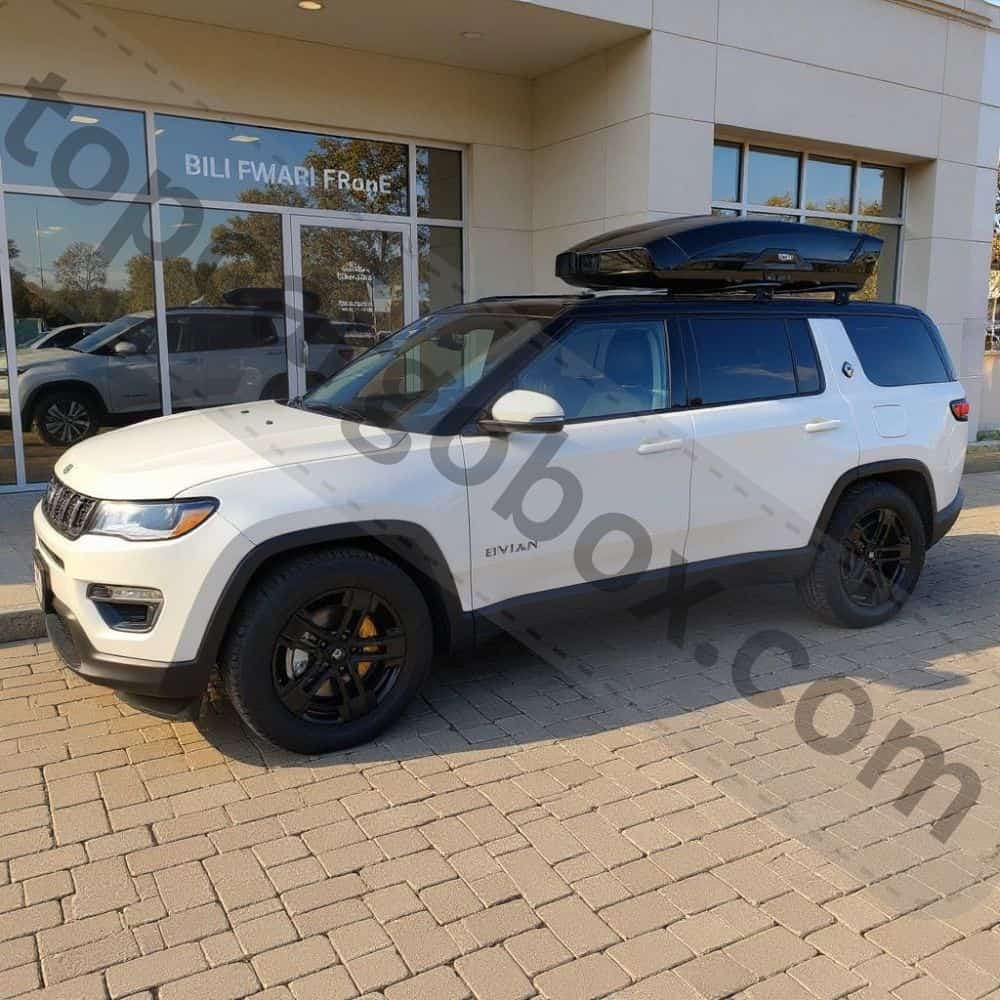
The “Out of Sight, Out of Mind” (and Reach) Problem
Ever realize halfway through your drive that you desperately need that extra hoodie, your phone charger, or your kid’s must-have-right-now toy? Seriously? If that stuff’s stashed up in the roof box, get ready for a whole ordeal. Forget just popping your trunk or reaching back – grabbing anything from up top means you’ve gotta pull over, wherever you are. Maybe it’s pouring rain, maybe it’s sweltering heat, maybe you’re just stuck on some sketchy roadside shoulder. Then comes the fun: fumbling for keys (hope you remember which pocket!), wrestling with stiff latches that might be jammed from pressure changes, and then basically playing a blind treasure hunt in a giant plastic cave while your stuff gets wet or cold.
You have to repack everything carefully so nothing flies loose when you slam it shut, double-check the lock’s actually secure, and finally climb back in the car. We’re talking 5-10 minutes minimum for what should be a 10-second grab. No wonder you end up cramming half the trip’s essentials inside the cabin anyway – kinda defeats the purpose of hauling that big box, right? What’s the point of all that fancy extra space if it’s useless when you actually need something mid-journey? Total pain, especially when you’re freezing or stuck in a downpour trying not to drop your keys. How do you feel about wrestling your luggage in a snowstorm just for some snacks? Not exactly the relaxing road trip vibe you pictured. And forget quick stops – this turns a simple coffee break into a major detour. Check out how washing your car becomes another chore thanks to the box!
Weather Woes and Security Jitters
While most boxes are waterresistant, few are truly waterproof under prolonged heavy rain or high-pressure car washes, especially as seals age. Are you willing to risk your sleeping bags, clothes, or camping gear getting soaked? You’ll probably still be using plastic bins or heavy-duty bags inside the box for critical items – more bulk and hassle. Then there’s security. Leaving valuables in a locked box is better than nothing, but determined thieves can often pry them open relatively quickly. You’ll likely avoid storing truly expensive or irreplaceable items up there, limiting its usefulness. That peace of mind you wanted? Gone.
Security Snags and Potential Damage
Speaking of security and damage, let’s dig deeper because these worries are legit and constant companions when you have a roof box.
The “Please Don’t Steal Me” Vibe
Let’s face it, a roof box screams “I’m traveling with lots of stuff!” It makes your car a more tempting target for opportunistic thieves. Even with a lock, most box locks are deterrents, not impenetrable fortresses. A determined thief with basic tools can often break into one fairly quickly. You’ll constantly worry when leaving the car unattended, especially overnight at hotels or in unfamiliar areas. It adds a layer of stress to your trip that you just don’t have when everything is locked inside the main cabin. You might find yourself parking directly under security lights or in the most visible spots, which aren’t always convenient. For real? Can’t I just relax on vacation?
Is Your Stuff Actually Safe Up There?
Ever hit a pothole and instantly wonder if your entire roof box just became a flying debris hazard? Yeah, that pit-in-your-stomach feeling is legit. It’s not just thieves you’ve gotta stress about – it’s your own stuff turning rogue. Did you really crank that latch down hard enough before merging onto the freeway? How about after that bone-jarring bump that made your teeth rattle? Picture this nightmare: 70 MPH, wind screaming, and whoosh – the box flies open. Your camping gear, suitcases, maybe even grandma’s antique lamp scattering across three lanes like a chaotic yard sale. Total disaster, right? Give me a break! Even if the lid stays miraculously shut (fingers crossed!), rough roads mean everything inside is getting tossed around like socks in a dryer.
That fragile souvenir? Probably shattered. Your neatly folded clothes? A crumpled mess. Nice try thinking just tossing it all in would work. You have to meticulously strap and pad every single item inside the box itself – adding another 15-20 minutes of tedious packing gymnastics. No matter how careful you are, it never quite feels as rock-solid safe as just chucking it in the trunk where you can see it. How do you feel trusting a plastic latch and some clamps with your valuables at highway speeds? That constant low-grade worry sucks the fun right out of the drive. Ever hear that ominous thump-thump-thump from above and just groan? Makes you question the whole setup. And honestly, is the extra space worth picturing your belongings exploding onto the interstate? Not exactly chill vibes. Learn more about minimizing these risks when driving with your cargo box.
Paint Paranoia and Wear & Tear
That roof box isn’t just sitting gently on clouds. It clamps firmly onto your crossbars, and the feet can potentially rub against or even scratch your car’s roof paint, especially if dirt gets trapped underneath. Over time, vibration can cause wear marks. Installing and removing it repeatedly increases this risk. You’ll probably be super careful every time, maybe using protective films or mats, which is just another thing to manage. Then there’s the box itself. Sun exposure fades colors and can eventually make plastic brittle. Road grime, salt, and weather take their toll. That expensive box won’t look shiny and new forever, and repairs can be difficult or impossible. It’s an investment that depreciates visually and functionally.
The Car Wash Conundrum and Maintenance
Keeping your car clean with a roof box attached? Yeah, that’s basically impossible using traditional methods. And the box itself needs care too. Get ready for some extra chores.
Automatic Car Washes? Nope!
Wave goodbye to the convenience of drive-through automatic car washes. The roof box makes your vehicle too tall and creates an obstruction that most car wash equipment simply can’t handle safely. You risk severe damage to the box, your roof rack, your car’s roof, and the car wash machinery itself. It’s a hard no-go. So how do you wash your car? You’re relegated to hand-washing only. But even that’s trickier. You have to awkwardly maneuver around the box and the crossbars, making it difficult to properly clean the roof underneath or even reach the center of the car’s roof. It’s time-consuming and frustrating. That quick wash turns into a major project. Our guide on car washing with a roof box offers some hacks, but it’s still a pain.

Cleaning the Beast Itself
Ever come back from a road trip and found your roof box looking like it lost a fight with a mud puddle? For real? That sleek shell is now a crusty canvas of splattered bugs, greasy road film, sticky tree sap, and the absolute worst – bird bombs that bake on faster than you can say “car wash.” Guess what? That grimy mess isn’t magically disappearing. Nope. You’re the lucky one climbing onto a wobbly step stool or ladder, arms aching, trying to scrub this giant, awkward plastic whale looming over your car. You can’t just grab any cleaner either – harsh chemicals might haze or crack the plastic, so it’s a whole research project finding something safe that actually works. And you have to tackle this grunt work somewhat often, especially after long trips or if some feathered jerk blessed your box. Acidic bird droppings? They’ll etch permanent stains faster than you think if you let ’em sit.
Seriously, where do you even put this monster to clean it properly? Your driveway becomes a soapy swamp, your garage floor needs protecting, and forget about maneuverability. Feeling under the weather after the drive? Too bad, champ – that box is a certified biohazard zone demanding immediate attention, adding another 30+ minutes of pure chore time you just don’t have. How’s scrubbing dried bug guts in the July heat sound for your post-vacation vibe? Nice try hoping a rainstorm would handle it! Learn why even washing your car becomes a major headache with this thing attached. It’s one more bulky, time-sucking obligation you signed up for. Ever get soapy water dripping right down your sleeve? Total mood killer. Makes you question if all that extra space was worth becoming a part-time box janitor.
Maintenance: Seals, Locks, and Latches
Like anything mechanical exposed to the elements, roof boxes need maintenance to function properly and stay water-resistant. The rubber door seals can dry out, crack, or get pinched, compromising the weatherproofing. They need periodic inspection and maybe treatment with rubber protectant. Locks and latches can get stiff, gritty, or corroded, especially in winter conditions. They need cleaning and lubrication. Hinges can wear. Ignoring this maintenance leads to leaks, difficulty opening/closing, and potential failure. It’s not just “set it and forget it.” You gotta take care of this plastic elephant. Off the top of my head, that’s more weekend time gone.
What About Emergencies and Key Loss?
Life happens. Things go wrong. Having a roof box adds extra layers of potential problems when the unexpected strikes.
Locked Out of Your Own Stuff?
Imagine arriving at your campsite or vacation rental after a long drive. You go to open the roof box… and realize you have no idea where the keys are. Panic sets in. Your tent, sleeping bags, clothes – everything you need right now – is locked away, utterly inaccessible. Roof box keys are often small and easy to misplace. Unlike your car key, you might not have a spare readily available. Getting back in can range from a frustrating delay (calling someone for the spare, if it exists and is far away) to requiring expensive locksmith services, or even forcing you to damage the lock mechanism to get access. Talk about a vacation mood killer! What if there was a smarter way? Check out our tips for opening a roof box without keys – but it’s not always easy or damage-free. Prevention (spare keys in a safe place!) is way better.
Roadside Breakdown Headaches
Picture this nightmare: your car conks out on some lonely stretch of highway, rain maybe starting to spit, and you’re already stressed. Now add that roof box into the mix – seriously? Suddenly, calling a tow truck isn’t a simple fix. The driver shows up, takes one look at your ride topped with that giant plastic container, and starts scratching their head. Your car isn’t just tall now, it’s potentially 6 feet off the ground or more with the box, and heavier too. Some flatbed trucks literally can’t haul it like that without scraping or worse. Give me a break! The absolute worst-case scenario? The tow guy tells you you’ve gotta unload the entire box full of your vacation gear, right there on the grimy shoulder, with cars whizzing past way too close. Where do you even put it all safely? Talk about leaving your stuff wide open to theft or the elements while you’re helplessly watching your car get hauled away.
How’s that for a relaxing roadside experience? It transforms a crappy situation into a total nightmare of scrambling and vulnerability. And hey, even something as basic as changing a flat tire gets way lamer. That extra height makes wrestling the spare out from underneath way more awkward, the jack might need different positioning, and you’re working around this big obstruction. Imagine trying to crank a lug wrench while hunched under a box overhang in the pouring rain – not exactly a picnic. Nice try thinking the roof box was just about extra space; it turns every potential hiccup into a major logistical grunt. Feeling the panic yet? Check how safe driving practices become even more critical with that extra load up top when things go sideways. Ever tried changing a tire on the side of a busy interstate without a giant box in the way? Multiply that stress by ten. That constant low hum of “what if we break down?” sucks the joy right out of a long drive.
Accident Aftermath Complexity
Alright, picture this already awful scene: crunch, glass breaking, that heart-stopping moment of a car accident. Now, throw your roof box into the mix. For real? That bulky container, even if it seemed locked down tight, can turn into a terrifying 500+ pound plastic missile in a serious impact. Imagine it tearing loose, smashing into other cars, pedestrians, or property – causing way more destruction than just your crumpled fender. Give me a break! Suddenly, the mess isn’t just your car; it’s multiplied, and that’s a horrible weight on your conscience during pure chaos. Dealing with police reports and shaken nerves is bad enough without picturing your gear becoming a deadly hazard.
Then comes the lovely insurance tango. Yeah, the assessor shows up, takes one look at the carnage, and now they’ve got two things to figure out: your car and this mangled box on top. Here’s the kicker – that expensive roof carrier? Your standard auto policy might just shrug and say “not covered, buddy,” leaving you high and dry for replacing it. Nice try assuming it was included! Plus, if your flying box bashed someone else’s prized pickup or a storefront window? You could be looking at separate liability claims stemming just from the box itself. It’s a paperwork circus you definitely didn’t buy tickets for, adding layers of phone calls, emails, and arguing over fine print when you’re just trying to recover. How do you feel about navigating that bureaucratic nightmare while your neck is stiff and your car’s in the shop? Is wrestling with extra claims and potential out-of-pocket costs for the box really the stress relief you need after a crash? Totally sucks. Feeling overwhelmed just thinking about it? Check how losing your keys becomes another panic point if you need access after the wreck. It’s the absolute last thing you want complicating an already traumatic event.
Key Roof Box Considerations at a Glance
Feature/Specification | What It Means for You (The Reality Check) |
|---|---|
Initial Cost | Box: $300-$1200+, Rack: $200-$600+, Install/Locks/Extras: $50-$200+. Significant upfront investment. |
Fuel Economy Impact | Expect 15%-30%+ decrease in MPG, especially at highway speeds. Significantly higher fuel costs per trip. |
Weight Limit | Typically 100-165 lbs MAX. Strict limit requires careful packing and weighing. Overloading is dangerous. |
Added Height | Adds 18-24+ inches. Bans drive-thrus, many parking garages, complicates home garage entry. |
Wind Noise | Constant, often loud whooshing/whistling at speeds over 45 MPH. Reduces cabin comfort. |
Handling Changes | Increased wind buffeting, body sway, top-heavy feel. Lower speed limits recommended (~75 MPH). |
Installation/Removal | Bulky (40-80+ lbs), awkward, time-consuming. Requires strength and care to avoid scratches. |
Storage (Off Car) | Requires significant space (garage/rafters). Bulky and difficult to store long-term. |
Accessibility | Requires stopping & unpacking to access items. Mid-trip access is highly inconvenient. |
Security | Locks deter casual theft but are not foolproof. Avoid storing high-value items. |
Car Wash Compatibility | Automatic washes are impossible. Hand washing becomes difficult and time-consuming. |
Is a Roof Box Right For YOU? Weighing the Reality
Phew! That’s a lot, right? After wading through all those disadvantages – the cost, the fuel drain, the noise, the handling quirks, the parking panic, the packing puzzles, the security worries, the cleaning chores, and the emergency hassles – you might be wondering, “Dude, why would anyone get one of these things?!”
Fair enough. The downsides are real and significant. They impact your wallet, your driving experience, your convenience, and your peace of mind. For many people, especially those who only occasionally need extra space or primarily drive in cities, the drawbacks absolutely outweigh the benefits. Renting a trailer for big trips, using a hitch cargo carrier, or just packing smarter and lighter might be far more sensible and cost-effective solutions. Old-school roof bags (soft carriers) are cheaper and easier to store, though they have their own downsides (security, weather protection).
But… for some folks, it’s still legit the best option.
If you frequently travel with a large family or group, haul bulky gear like skis, snowboards, or camping equipment regularly, drive a vehicle with minimal trunk space (like many hybrids/EVs where the battery eats cargo room), and primarily drive on highways where the fuel penalty is just a calculated cost of doing business, a roof box can be a worthwhile solution. The key is going in with your eyes wide open.
Make the downsides work for you:
- Buy Used: Find a quality used box and rack system to slash the upfront cost. Check mounts and seals carefully!
- Size Smart: Get the smallest box that meets your actual needs. Smaller = less drag, less weight, less height. Our roof box size guide helps you choose right.
- Remove Religiously: Take it off the SECOND your trip is over. Saves fuel daily, prevents sun damage, frees up parking/garage access.
- Pack Like a Pro: Distribute weight perfectly, stay under the limit, secure loose items inside. It’s non-negotiable for safety and handling.
- Drive Mindfully: Slow down! Embrace the right lane. It saves gas dramatically and reduces wind noise and buffeting stress.
- Protect Your Paint: Use quality crossbar pads or protective film where the feet meet the bars/roof.
- Maintain It: Clean it, lubricate locks/hinges, inspect seals. Make it last.
Ultimately, choosing a roof box isn’t about whether it has disadvantages – it definitely, 100% does. It’s about whether your specific needs, travel habits, budget, and tolerance for hassle make those disadvantages an acceptable trade-off for the extra space it provides. Don’t get swept up by the cool factor or the marketing. Honestly assess how you’ll use it and how much annoyance you’re willing to put up with. For some, it’s a game-changer. For others, it’s an expensive, gas-guzzling, noisy headache that lives in the garage. Only you can decide which side you’re on! Choose wisely, and safe travels out there! Catch you later!
Our team is creating outdoor-gear relevant articles with passion. If our articles can help you to find the correct solutions for your questions, we will be happy about that. In the content creation process, we usually collect accurate and useful information online or offline to compile our content in an organized way. Consequently, we can guarantee that you can discover some expected answers to your questions. We appreciate your time on our site.

